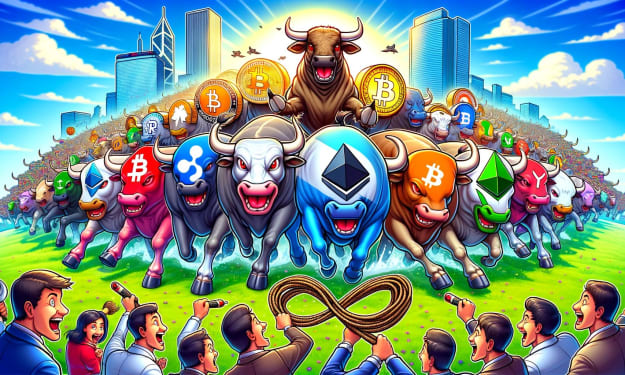
What is the Metaverse?
There is currently no universally accepted definition of the metaverse. Broadly speaking, the Metaverse is a fusion of physical reality and extended reality (XR) in a timeless, shared virtual space. XR technology is a general term for augmented reality (AR), virtual reality (VR) and mixed reality technologies. The Metaverse provides a virtual space for interaction, connection, sharing and collaboration. In the Metaverse Development Company, people can do almost everything they can do in the real world, including play games, work, hold meetings, collaborate, shop, hang out, watch movies, attend movies and concerts, and more.
The next generation of Multidimensional Web 3.0 will complement the Metaverse. The combination of the two is likely to be accompanied by a quantum leap in data capture, transmission and storage technology — a leap that will require significant investment in digital infrastructure. To obtain a high-quality immersive experience, it may be necessary to use high dynamic range image (HDR) technology to transmit 8K resolution images at 60 frames per second, and it is also necessary to improve image color saturation and contrast between light and dark. These specifications will place high demands on network bandwidth, even with advanced compression techniques.
The Metaverse Development Services brings huge economic opportunities, because the global metaverse market size has reached 4.69 billion US dollars in 2020, and the average annual growth rate between 2020 and 2027 is estimated to reach 43.3% . Currently, immersive technologies are attracting increasing interest. We are likely to witness the steady development of XR technology and “digital twin” technology, which will bring us closer to one or more metaverse visions.
1. Education and training
The most compelling applications for immersive technology will be in education and training.
Research from the University of Maryland shows that users can access information more effectively when it is presented in VR rather than on a computer screen. According to a report by PricewaterhouseCoopers , the progress of soft skills training for corporate employees through VR classrooms is four times faster than training through traditional face-to-face classrooms or online training methods.
In order to improve the effectiveness of employee training, Wal-Mart has arranged 17,000 sets of headset VR headsets. The move shortened the training time for some content from 8 hours to 15 minutes without compromising the effectiveness of the training. Similarly, Verizon Telecom cut the training time for call center agents who handle angry customers from 10 hours to 30 minutes.
2. Medical and health care
The UK’s NHS has launched a study to determine the value of VR technology in training frontline staff in hospitals. The study found that 92% of students who participated in the VR classroom training on infection control measures (VR group students) fully understood such measures, compared with only 16% of the control group. The level of work performance in the VR group increased by more than 230% after training, while the control group only increased by 16.75%. In addition, users of such measures report reduced levels of anxiety in the face of someone infected with the coronavirus.
British medical experts have also used augmented reality (AR) technology to manage new crown positive patients, which has reduced the exposure risk of medical staff by 51.5%.
3. Urban development
Currently, many cities are creating digital twin systems to improve the efficiency of urban operations and improve urban planning. Singapore has built a digital twin system “Virtual Singapore” (Virtual Singapore ). The system enables users to visualize in 3D how the city will grow and evolve in response to population growth and new construction. This visualization system is used for a variety of purposes, including carrying out traffic planning in a simulated manner, determining the best locations for solar energy systems, and more.
Seoul has announced that the city government will provide Metaverse Development solution so that citizens can interact with government officials, resolve civil complaints, and receive consultation services in a virtual world without having to go to city hall.
Saudi Arabia is building Neom , a futuristic city with a total investment of $500 billion . The city will have a metaverse-style digital twin for citizens to experience urban life before the city becomes operational.
What should developing countries consider?
How can developing countries take advantage of the metaverse, an emerging technology of the future? In the initial stage, they can apply immersive technology to the field of education and training, such as allowing teachers to receive immersive training in teacher training institutions, or encouraging students to create teaching content on game platforms. Likewise, healthcare professionals can be better trained with immersive technology.
The Metaverse is also able to optimize urban development. The future of architectural design will merge with the virtual world, as new building shapes, new experiences, new functions, and new aesthetic representations can be applied to the design field. Cities in developing countries can pilot the redesign of urban spaces, including slum redesign, with the help of architects and gamers who collaborate in immersive spaces. Use the immersive experience to solicit input from residents on design alternatives. The redesigned commercial space can be sold in the virtual world, and its ownership can be transferred to its physical twin at the time of execution, thereby generating income for urban development.
The most important point is that developing countries can consider formulating national strategies on digital twins, because digital twins will become the cornerstone of the Metaverse in the future. Currently, the UK, New Zealand and the European Union are working on developing policies and initiatives to promote the development of digital twin technology. In addition, the development of the metaverse can also be incorporated into the national data ecosystem development strategy. Developing the strategy is one of the recommendations of the World Development Report 2021: Data Improves Lives.
Although the Metaverse Token Development Company currently has hype risks and other collateral risks, it may bring benefits to multiple fields such as healthcare, education, and urban development. After careful consideration, developing countries can begin to explore the potential benefits (and risks) of the Metaverse, an underdeveloped technology that has the potential to gain momentum in the coming years.
About the Creator
Sandyzakk
Enter and create digital economies, leveraging blockchain technology with our Metaverse development services. Design, build, and launch amazing experiences for your users effectively with a leading metaverse development company.






Comments
Sandyzakk is not accepting comments at the moment
Want to show your support? Send them a one-off tip.